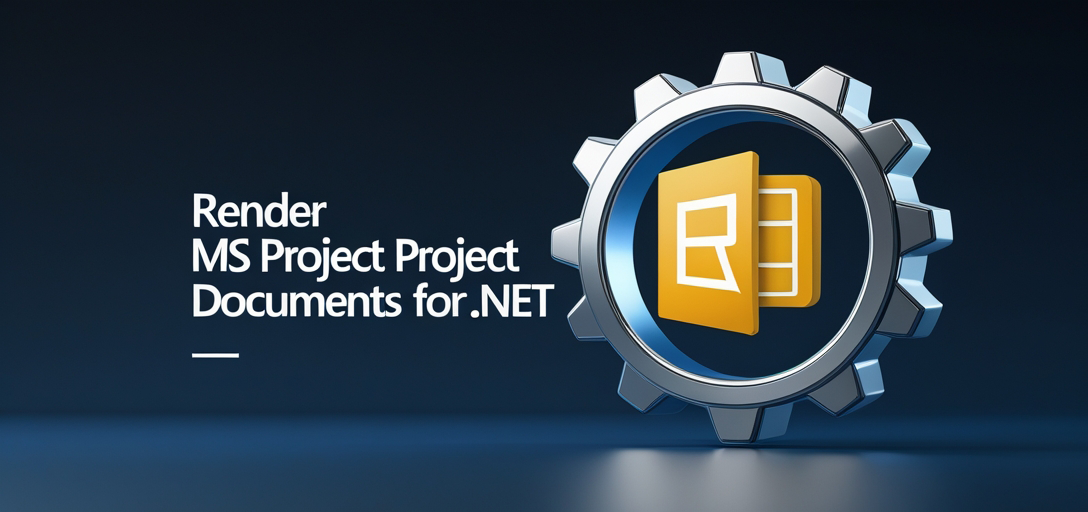Mastering MS Project Document Rendering in .NET with GroupDocs.Viewer
Introduction
In today’s fast-paced business environments, efficiently managing project timelines and resources is crucial. Stakeholders often need to view specific portions of a project without the clutter of an entire MS Project file. This tutorial dives into how you can render sections of your MS Project documents within specified time intervals using GroupDocs.Viewer for .NET—your key solution to this common problem.

What You’ll Learn:
- How to set up and configure GroupDocs.Viewer for .NET.
- Rendering specific portions of an MS Project document based on date ranges.
- Managing file paths and directories effectively in your application.
- Practical use cases where this feature can enhance project management processes.
Let’s move from the problem space into a world of streamlined project visualization. But before we dive in, let’s cover some prerequisites.
Prerequisites
Before embarking on this journey with GroupDocs.Viewer for .NET, ensure you have:
- Required Libraries and Versions: You’ll need to install GroupDocs.Viewer version 25.3.0.
- Environment Setup Requirements: A compatible development environment such as Visual Studio 2019 or later.
- Knowledge Prerequisites: Basic understanding of C# programming and familiarity with .NET frameworks.
Setting Up GroupDocs.Viewer for .NET
To get started, you’ll need to install the GroupDocs.Viewer package. You can do this using either the NuGet Package Manager Console or the .NET CLI. Here’s how: NuGet Package Manager Console:
Install-Package GroupDocs.Viewer -Version 25.3.0
.NET CLI:
dotnet add package GroupDocs.Viewer --version 25.3.0
Once installed, you’ll need to acquire a license for GroupDocs.Viewer. You can start with a free trial or request a temporary license if you’re considering integrating this solution into your project long-term. Basic Initialization: Here’s how you initialize and set up the viewer:
using System;
using GroupDocs.Viewer;
string filePath = "YOUR_DOCUMENT_DIRECTORY\\Sample.mpp";
// Initialize Viewer object with input file path
using (Viewer viewer = new Viewer(filePath))
{
// Code for rendering options will go here
}
Implementation Guide
Rendering MS Project Documents
This feature is all about focusing on relevant project intervals. Here’s how you can achieve it:
Setting Up the Output Directory
First, ensure your output directory exists or create one if necessary:
string outputDirectory = Path.Combine("YOUR_OUTPUT_DIRECTORY", "RenderProjectTimeInterval");
if (!Directory.Exists(outputDirectory))
Directory.CreateDirectory(outputDirectory);
string pageFilePathFormat = Path.Combine(outputDirectory, "page_{0}.html");
Rendering with GroupDocs.Viewer
Now let’s look at the main rendering logic:
using System.IO;
using GroupDocs.Viewer;
using GroupDocs.Viewer.Options;
using GroupDocs.Viewer.Results;
// Initialize Viewer object with input file path
to render specific portions of MS Project documents.
using (Viewer viewer = new Viewer("YOUR_DOCUMENT_DIRECTORY\\Sample.mpp"))
{
// Set up HTML view options for embedded resources
HtmlViewOptions options = HtmlViewOptions.ForEmbeddedResources(pageFilePathFormat);
// Retrieve project management view information from the document
ProjectManagementViewInfo viewInfo = viewer.GetViewInfo(ViewInfoOptions.FromHtmlViewOptions(options)) as ProjectManagementViewInfo;
// Configure start and end dates for rendering
options.ProjectManagementOptions.StartDate = viewInfo.StartDate;
options.ProjectManagementOptions.EndDate = viewInfo.StartDate.AddDays(7);
// Render the document with specified options
viewer.View(options);
}
Explanation:
HtmlViewOptions: This sets up the rendering to output HTML files with embedded resources.- Project Management Options: These allow you to define a specific time interval for rendering, which is crucial for focusing on relevant project data.
File and Directory Handling
Managing file paths effectively ensures that your rendered documents are organized:
string outputPath = Path.Combine("YOUR_OUTPUT_DIRECTORY", "RenderProjectTimeInterval");
if (!Directory.Exists(outputPath))
Directory.CreateDirectory(outputPath);
string formattedFilePath = Path.Combine(outputPath, "output_page_{0}.html");
Practical Applications
Here are some real-world scenarios where rendering specific project intervals can be incredibly useful:
- Stakeholder Updates: Share targeted project updates with stakeholders focusing only on upcoming tasks.
- Resource Allocation Reviews: Assess and adjust resource allocations for the near future without sifting through entire timelines.
- Progress Tracking: Quickly track progress over a specified period, making it easier to report and analyze.
Performance Considerations
When integrating GroupDocs.Viewer into your .NET applications:
- Optimize File Handling: Manage file streams efficiently to reduce memory usage.
- Use Embedded Resources Wisely: Ensure that rendering options align with the application’s performance requirements.
- Memory Management Best Practices: Always dispose of Viewer objects correctly using
usingstatements to free up resources.
Conclusion
By now, you should have a solid understanding of how to render MS Project documents for specific time intervals using GroupDocs.Viewer for .NET. This capability can streamline your project management processes and offer stakeholders precise insights tailored to their needs. Next Steps:
- Experiment with different date ranges and see how it impacts the rendered output.
- Explore additional features of GroupDocs.Viewer to enhance your document viewing capabilities. Ready to put this into practice? Try implementing these solutions in your next .NET project!
FAQ Section
- How do I install GroupDocs.Viewer for my .NET application?
- Use NuGet or the .NET CLI as detailed above.
- What is the purpose of
ProjectManagementOptionsin rendering?- It allows you to specify a time interval, focusing on relevant project data.
- Can I render documents other than MS Project files with GroupDocs.Viewer?
- Yes, it supports a wide range of document formats.
- How can I handle large MS Project files efficiently in .NET applications?
- Use efficient file handling techniques and ensure proper disposal of resources.
- Is there support for rendering documents directly to PDF or image formats?
- Absolutely! GroupDocs.Viewer supports various output formats, including PDF and images.